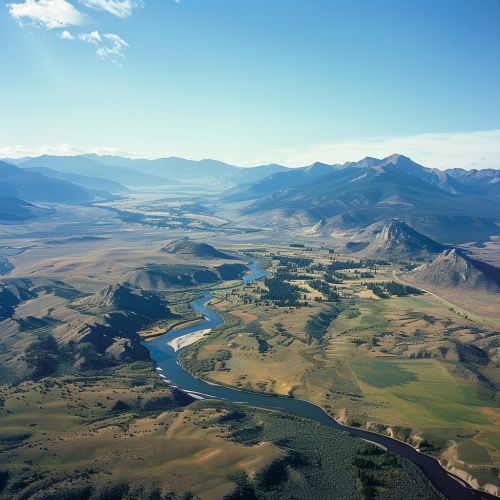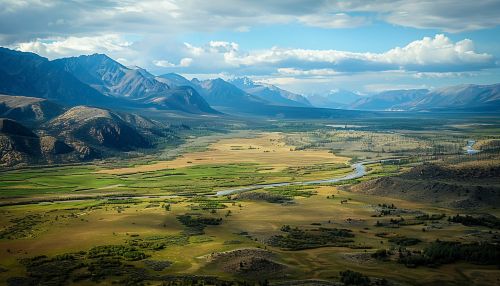America (continent)
Geography
The continent of America is located primarily in the Western Hemisphere, extending from the Arctic Circle in the north to the southernmost tip of South America. It is the second largest continent in terms of land area, covering approximately 42,549,000 square kilometers or about 28% of the world's total land area. The continent is characterized by its diverse geography, which includes vast mountain ranges, extensive plains, and large river systems.


Mountain Ranges
America is home to several major mountain ranges. The most notable of these is the Andes Mountains, which extend along the western edge of South America. They are the longest continental mountain range in the world, spanning over 7,000 kilometers. In North America, the Rocky Mountain Range stretches from northern Canada to the southwestern United States, and is known for its high peaks and deep valleys.
Plains
The continent also features extensive plains, such as the Great Plains in North America, which span across multiple U.S. states and into Canada. In South America, the Pampas are a grassland biome that covers large parts of Argentina, Uruguay, and Brazil.
River Systems
America's river systems are equally diverse and expansive. The Mississippi in North America is one of the longest rivers in the world, while the Amazon in South America has the largest drainage basin on Earth, discharging more water than any other river.
Climate
The climate of America varies greatly due to its large size and geographical diversity. It ranges from arctic climates in the northern regions, to tropical climates near the equator, and temperate climates in between. The continent also experiences a range of weather phenomena, including hurricanes in the Atlantic and Gulf of Mexico, tornadoes in the central United States, and El Niño events in the Pacific Ocean.
Biodiversity
America is known for its rich biodiversity. The continent is home to numerous ecosystems, each with its own unique flora and fauna. For example, the Amazon Rainforest in South America is one of the most biodiverse regions on Earth, while the Great Plains of North America are known for their large populations of bison and prairie dogs.
Demographics
The continent of America is populated by a diverse range of ethnic groups, cultures, and languages. As of 2020, the combined population of North, Central, and South America is estimated to be over 1 billion people.
Ethnic Groups
The indigenous peoples of America, including the Native American tribes of North America and the various indigenous groups of Central and South America, have a rich cultural heritage that predates European colonization. Today, the continent is home to a mix of ethnic groups, including those of European, African, Asian, and indigenous descent.
Languages
There are hundreds of languages spoken across the continent. English and Spanish are the most widely spoken languages in America, but there are also significant populations that speak Portuguese, French, and various indigenous languages.
History
The history of America spans thousands of years, from the arrival of the first humans across the Bering Land Bridge, to the rise and fall of indigenous civilizations, the era of European colonization, and the development of modern nations.
Pre-Columbian Era
The Pre-Columbian era refers to the period before the arrival of Christopher Columbus in 1492. During this time, numerous indigenous civilizations thrived, including the Maya, Aztec, and Inca in Central and South America, and the Mississippian and Puebloan cultures in North America.
European Colonization
The era of European colonization began with the arrival of Christopher Columbus in 1492, sponsored by the Spanish Crown. This marked the beginning of a period of exploration, conquest, and colonization by European powers, including Spain, Portugal, England, France, and the Netherlands.
Modern Era
The modern era of America's history is marked by the formation of independent nations, the industrial revolution, and significant social, political, and economic changes. This includes the United States' rise as a global superpower, the political revolutions in Latin America, and the ongoing struggles for social justice and equality.
